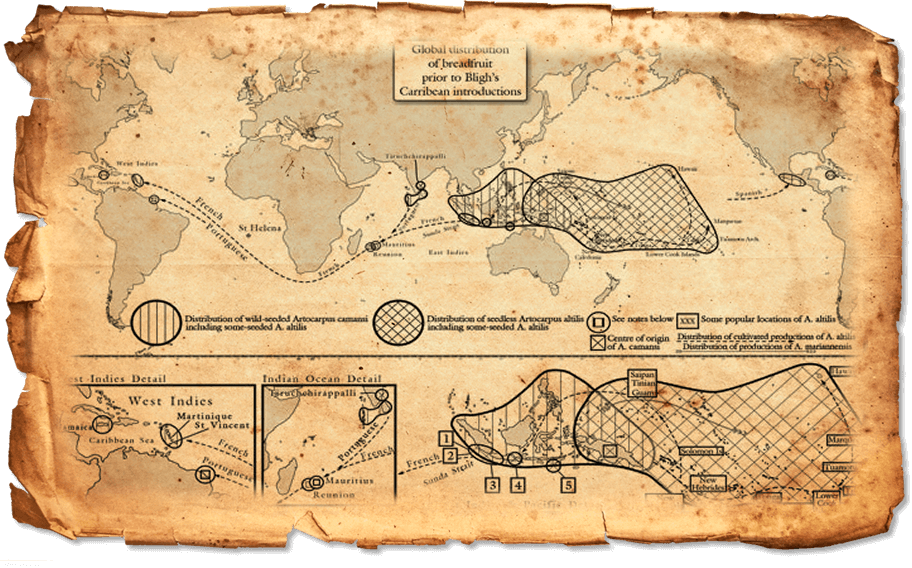DISPLAYED ARE TWO OF THE BOOK’S FORTY-NINE ILLUSTRATIONS
THE BOUNTY LOGBOOKS: The Conspiracy on the Bounty provides a plausible reason why no less than two original logbooks went astray. It also explains why an alleged original is in fact a copy, and unlikely to be a faithful reproduction. In collecting primary material, the time frame of particular interest is the period when the Bounty first arrived at Tahiti till it departed some five months later – 26 October 1788 to 5 April 1789. It is rarely appreciated that not one known shred of logbook or journal written at the time the events took place can be claimed to be original. More common are the doubts that pervade as to the originality of certain other revered logbooks and journals purportedly kept either prior or since the Bounty’s five month stay at Matavai Bay. Previous researchers have clearly struggled with this same lack of contemporary written material.
STRATEGIC BREADFRUIT: Before its dissemination by Western peoples, breadfruit could be found growing in most regions of tropical Oceania including the Malay Archipelago. In 1775 the renowned English biologist, John Ellis, heralded the breadfruit as ‘the most useful of all the Fruits in the East Indies’. In this illustration the indicator boxes show places where the desired seedless breadfruits were known to grow. Boxes numbering one to four mark places now known as Bengkulu, Panaitan Island, Serang and Madura. Ellis recommended these areas because they were close to the east-Indiaman shipping trunk routes. Items one to four were not the only areas where these plants could be found; they were merely the more convenient ones. Insofar as the dissemination by Europeans, the Portuguese may have introduced seedless breadfruit to North East Brazil from the Maldives in the early eighteenth century: both seeded and seedless breadfruit were introduced into Venezuela in 1780. Seeded breadfruit (and possibly seedless clones) had been introduced to the Caribbean up to eleven years before Bligh delivered his. Certainly there was seeded breadfruit at Gordon Town (Liguanea) at Bath in Jamaica, and also at St Vincent and Martinique in the Windward Islands. It was also growing at Reunion Island and at the Pamplemousse Botanic Gardens nearby at Mauritius. Seedless breadfruit had been found growing as far north as Tiruchchirappalli in India and was flourishing in abundance at Tinian Island in the Mariana Archipelago. Seedless breadfruit had reached Eastern Malaysia and Timor long before the mutiny on the Bounty.



